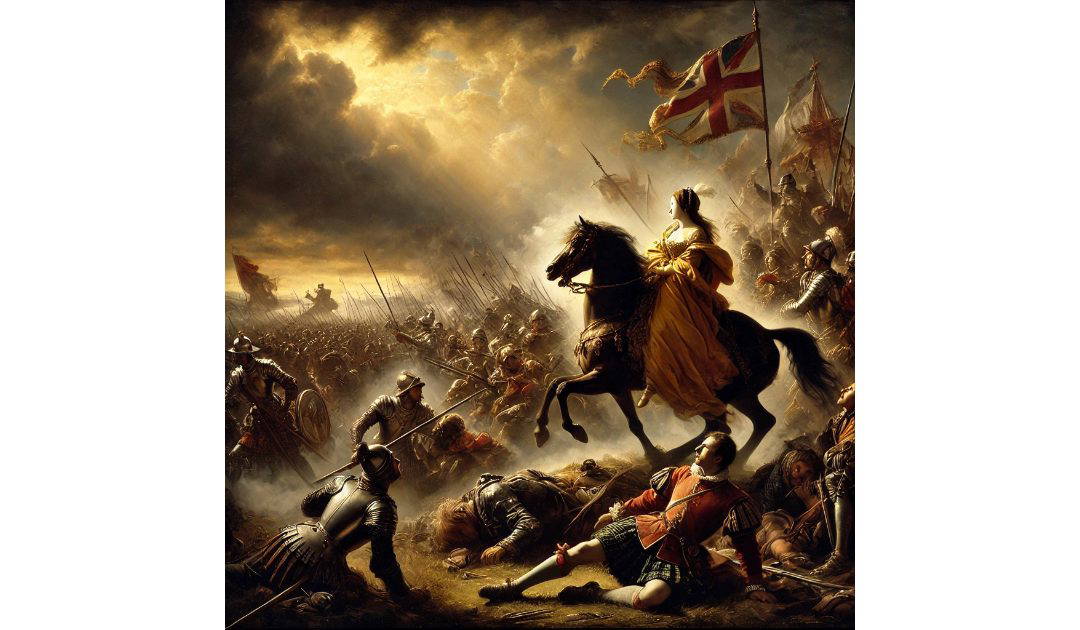On the 13th of May, 1568, Mary Queen of Scots was defeated at the Battle of Langside. My ancestor, Sir Anthony Standen, was Master of Horse to Lord Darnley, and accompanied him to Edinburgh in February 1565. Standen was knighted by Mary for saving her life during the assassination of her secretarty, David Rizzio. After Darnley was murdered, Standen travelled to Paris, so he won’t have been at the Battle of Langside.
The Battle of Langside was fought on the outskirts of Glasgow and marked a crucial point in the turbulent reign of Mary, Queen of Scots. The battle was not merely a military engagement but a symbol of the intense political and religious strife that characterised 16th-century Scotland.
The roots of the Battle of Langside lie in the complex political landscape of Scotland in the mid-16th century. Mary, Queen of Scots, had returned to Scotland from France in 1561, following the death of her husband, Francis II of France. As a Catholic, she faced a predominantly Protestant nobility and a nation increasingly divided along religious lines.
Mary’s subsequent marriage to Henry Stuart, Lord Darnley, was initially seen as a favourable alliance, yet it soon turned sour. Darnley’s murder in 1567, and Mary’s immediate marriage to James Hepburn, Earl of Bothwell, who was suspected of involvement in Darnley’s death, scandalised the Scottish nobility and public. These events led to Mary’s forced abdication in favour of her infant son, James VI, and her imprisonment at Loch Leven Castle.
After escaping captivity in 1568, Mary sought to reclaim her throne. She gathered a force of supporters, including prominent Catholic nobles, and set out to rally further support en route to Dumbarton Castle, a strategic stronghold where she could potentially gain reinforcements and solidify her position.
The forces that gathered at Langside were composed of approximately 6,000 troops loyal to Mary and a slightly larger contingent commanded by the Regent Moray, acting on behalf of her son, James VI. Moray’s forces were better organised and strategically positioned.
The battlefield at Langside was a narrow ridge, giving the defending troops a significant advantage. As Mary’s forces advanced, they were met with a barrage of gunfire from Moray’s artillery. The battle itself was fierce but brief, lasting less than an hour. Despite the valiant efforts of Mary’s commanders, such as the Earl of Argyll, her forces were decisively defeated.
Key to the outcome was Moray’s tactical acumen, exploiting the terrain and the element of surprise. His forces utilised disciplined pike formations and effective use of cavalry, which outflanked and overwhelmed Mary’s troops.
The defeat at Langside forced Mary to flee to England, seeking the protection of her cousin, Queen Elizabeth I. However, instead of receiving asylum, Mary was imprisoned by Elizabeth, who saw her as a legitimate threat to her own throne due to Mary’s Catholic claim and connections.
The consequences of the Battle of Langside were profound. It effectively ended any immediate hope Mary had of regaining her throne and cemented the Protestant Reformation’s impact in Scotland. James VI’s rule continued under the regency of Moray and his successors, ensuring the Protestant establishment’s dominance in Scottish affairs.
For Scotland, the battle influenced the country’s political and religious trajectory, aligning it more closely with Protestant England. This alignment set the stage for future conflicts and alliances, shaping the British Isles’ history for centuries. It also underscored the fragile nature of monarchical power and the shifting allegiances that characterised the time.

